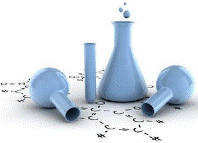Chemical and Biomolecular Engineering, Department of

Department of Chemical and Biomolecular Engineering: Faculty Publications
Date of this Version
8-1-2017
Document Type
Article
Citation
PLOS ONE | https://doi.org/10.1371/journal.pone.0181717
Abstract
This study presents two novel theoretical models to elucidate frequency sensitive nuclear mechanisms in low-intensity ultrasound enhanced bioeffects. In contrast to the typical 1.5 MHz pulsed ultrasound regime, our group previously experimentally confirmed that ultrasound stimulation of anchored chondrocytes at resonant frequency maximized gene expression of load inducible genes which are regulatory markers for cellular response to external stimuli. However, ERK phosphorylation displayed no frequency dependency, suggesting that the biochemical mechanisms involved in enhanced gene expression is downstream of ERK phosphorylation. To elucidate such underlying mechanisms, this study presents a theoretical model of an anchored cell, representing an in vitro chondrocyte, in an ultrasound field. The model results showed that the mechanical energy storage is maximized at the chondrocyte's resonant frequency and the energy density in the nucleus is almost twice as high as in the cytoplasm. Next, a mechanochemical model was developed to link the mechanical stimulation of ultrasound and the increased mechanical energy density in the nucleus to the downstream targets of the ERK pathway. This study showed for the first time that ultrasound stimulation induces frequency dependent gene expression as a result of altered rates of transcription factors binding to chromatin.
Included in
Analytical, Diagnostic and Therapeutic Techniques and Equipment Commons, Biomedical Engineering and Bioengineering Commons


Comments
Copyright: © 2017 Miller et al. This is an open access article distributed under the terms of the Creative Commons Attribution License